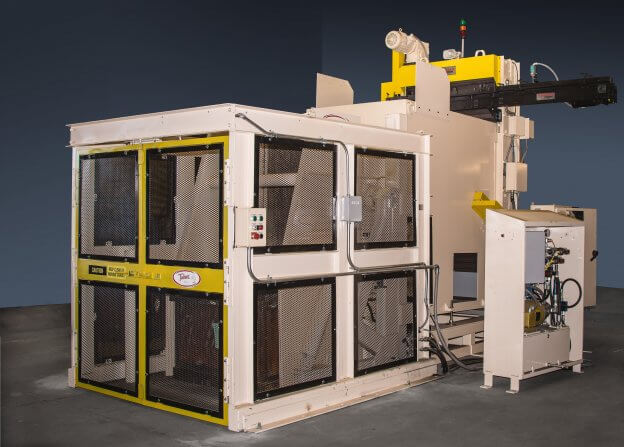Why Parts Feeding Systems Matter
In just about every industry, production environments are changing drastically. The operational technology (OT) of manufacturing companies use parts feeding systems to enhance their operation by increasing up-time and reducing overall labor costs — enabling companies to not only to make processes more productive, but also to give leadership and shop managers better quality and predictability of their equipment and output.
Parts feeding systems are no exception. This key component of a manufacturing or a production facility is the lean system by which numerous items and components are fed to other equipment, allowing the manufacturing process to move forward. Now more than ever, organizations looking to take their teams and facilities to the next level must not settle for parts feeding systems that do not support, align with, or enhance their production capabilities and goals.
Just as important, companies need to consider parts feeding solutions designed to operate at peak performance for extended periods of time. Production facilities are now operating 24 hours per day, seven days per week, and 365 days a year to keep up with business and consumer demands. Such stringent expectations can take a heavy toll on equipment that is not designed or built to endure the rigors of this environment.
Also, consider the warranty and support systems in place for such equipment. If just one production asset went down (whether it be a parts feeding system, conveyor, or some other form of material handling system), your organization could be significantly impacted financially and operationally. The longer that it takes for the equipment to be repaired or replaced results in even more ramifications to your production goals.
What should your organization look for when it comes to parts feeding systems? Sure, certain features and functionality should go without saying, but remember how important parts feeding systems are to your overall production goals. You may be able to orient parts in a variety of different configurations, accept numerous different loading options, and specify virtually any type of parts distribution, but if certain elements of your parts feeding system aren’t properly engineered, it will not be a successful solution for your business in the long run.
Three Considerations for a Truly Successful Parts Feeding System
Feedall Automation has been providing companies with solutions for higher rates of production since 1946. For more than 70 years, we have helped to revolutionize feeding equipment to streamline and enhance manufacturing operations worldwide. Our expert team knows better than anyone what it takes to design and implement a successful parts feeding system. Here are three things you should consider to turn your business into a world-class production facility.
1. Integration Flexibility
You need a system that works with your production environment. While there are systems available that can be readily obtained, that doesn’t mean they’re the right ones for your business. What matters is that your parts feeding system integrates with and supports the other equipment, IT infrastructure and control systems in your facility. Obviously, parts feeding systems by their design support upstream processes in the production process, but consider what you really need in order to make the entire process turn key and seamless. While Part Feeding Systems are typically the last item added to a process, the integration of this equipment is crucial inorder to make everything work together.
2. Reliability
Parts feeding systems play an integral role in both the manufacturing of the main throughput process in your operation as well as the overall uptime of your facility. Automation is key to a successful production environment, but that automation must be reliable. The last thing your facility and team need to deal with is a machine repeatedly breaking down, becoming jammed, or failing in its intended purpose. These machines are long-term investments, which is why you want to work with a parts feeding equipment provider that designs systems to operate continually with little ongoing maintenance. This enables you to achieve maximum uptime.
3. Support
While maintenance is inevitable, what matters is the long-term support you receive from the equipment manufacturer. When a custom parts feeding system needs repairs or replacement parts, you’ll need this support quickly. Often, you may even need the manufacturer to come to your location for a field inspection, as your internal team may not have the skill or knowledge to troubleshoot the problem and identify a solution. Ensure you’re working with a partner that supports their parts feeding systems wherever you are, and for the life of the machine.
Experience the Feedall Automation Difference
Feedall Automation has been working with companies in all manner of industries to solve their most complex and demanding production challenges. We offer a variety of parts feeding systems ranging from orienting feeders for both small and large parts to bar and shaft feeders that come in a number of different configurations to support your needs. And of course, every machine we manufacture comes with best-in-class service and support.
 Menu
Menu
